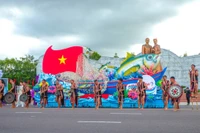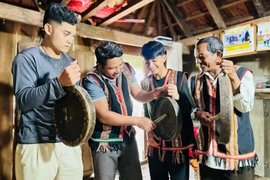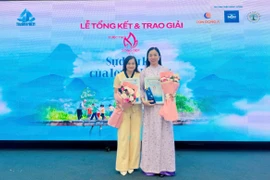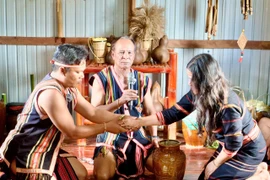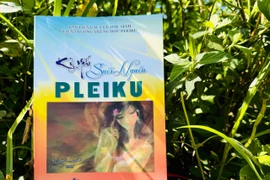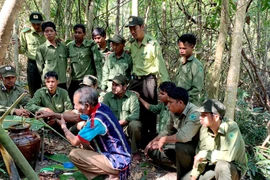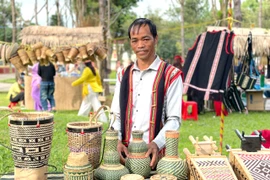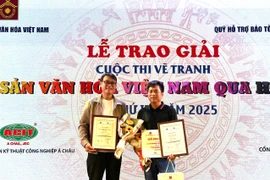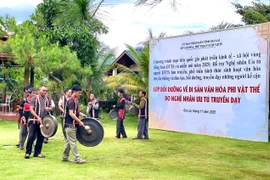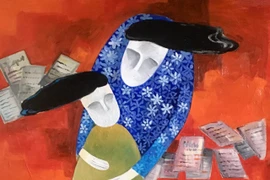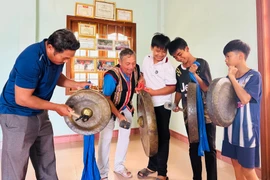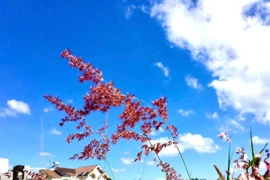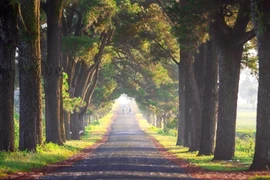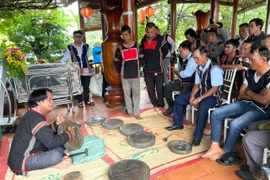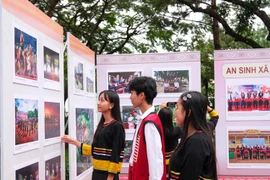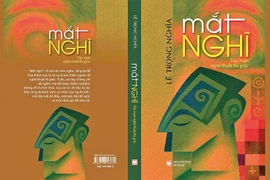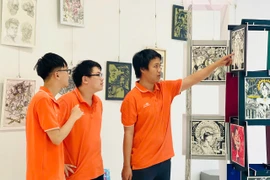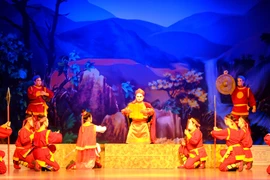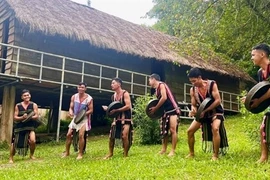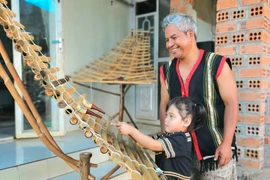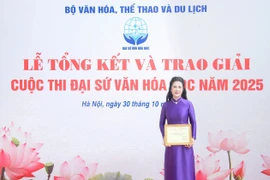Artisans from both groups have dedicated decades to preserving and transmitting the unique sounds and performance styles of their gong ensembles, which remain central to spiritual and communal life.
The instruments are not only musical but also sacred, marking life events such as funerals, weddings, harvest rituals, and festivals.

Distinct but connected traditions
Artisan Ksor Mang, 40, of the Jrai ethnic group, explained that each gong set has its own function: the Arap for funerals, M’nhum for joyful festivals, T’rum for community gatherings and Vang for rituals seeking rain or health.
The most revered is the M’lem, or Ancestors’ gong, a family heirloom reserved for major occasions such as weddings or housewarmings.
Performance techniques also differ. Jrai players use mallets of hardwood, softwood, or leather to produce varying tones, sometimes altering sound by squeezing the rim of the gong.
For the Bahnar, a typical set consists of 18 to 20 gongs. Artisan Ayó, 65, has taught and performed for more than half a century.
His village ensemble of 40 members, including children and grandchildren, regularly performs at cultural events.
While Jrai playing is often described as strong and spirited, Bahnar gong music is gentler and contemplative, especially during ceremonies like grave-leaving or buffalo sacrifices.

gongs. Photo: R.H
Cultural exchange and evolution
Meritorious Artisan Rơ Châm Tih, 52, noted that while Jrai ensembles once had no more than 13 performers, today they may involve up to 20, enriching the texture of performances.
In Gia Lai’s Đak Đoa and Pleiku districts, where Jrai and Bahnar communities live side by side, exchanges have created shared rhythms while preserving distinct identities.
Artisan Yang Danh, 79, traced the traditions back to the French colonial period, highlighting regional variations: Bahnar in Vinh Thanh often play sets of three to five gongs, while those in An Khê use five to seven.
The Jrai and Bahnar are two of the oldest and largest indigenous ethnic groups among the ethnic minorities in the former Gia Lai province.
Twenty years ago, the space of Gong culture in the Central Highlands was recognized by UNESCO as an Intangible Cultural Heritage of Humanity.
Gong sets are generally divided into mother gongs, medium gongs, and small gongs, each producing different tonal ranges.
Preserving heritage for the future
People’s artisan Đinh Chương, 86, of the Bahnar community in Vinh Son commune, has devoted his life to teaching gong music.
He advocates for cross-village exchanges to strengthen cultural continuity, particularly between Bahnar communities of the former Gia Lai and Bình Định provinces, now administratively unified.
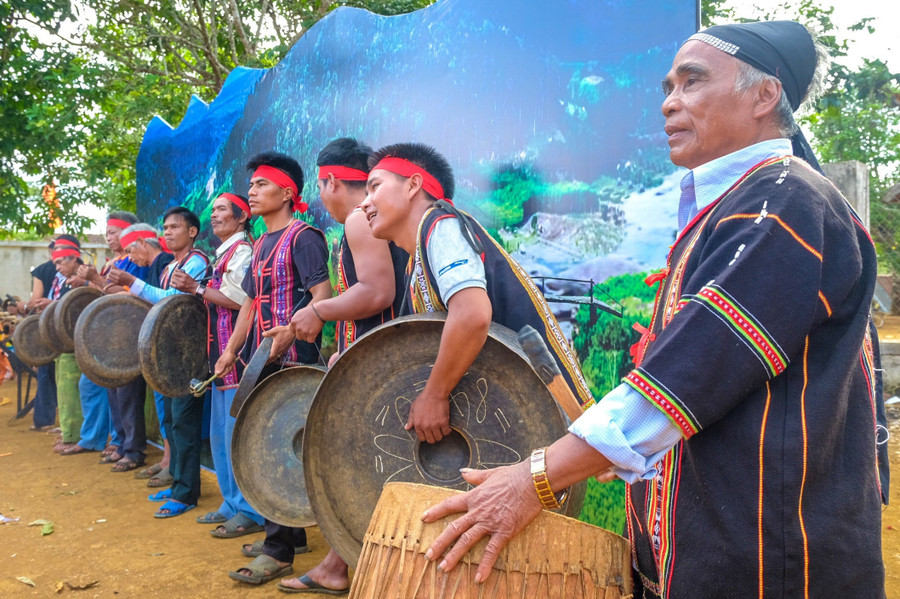
“Through exchanges, we can learn from one another and ensure gong music resonates even more vibrantly throughout the mountains and forests of Gia Lai,” Đinh Chương said.

